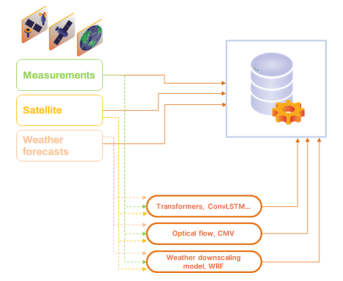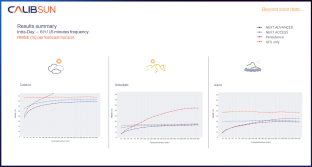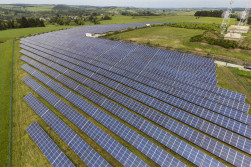Solar forecasts: a question of data analysis
 2 May 2023
2 May 2023
 2 May 2023
2 May 2023
At the heart of solar resource forecasting lies the collection of forecast meteorological data (NWP - numerical weather prediction), satellite images, historical solar irradiance records and ground-based meteorological sensors. These data sources are essential for building forecasting models and simulating the behavior of atmospheric changes over several time intervals and at various scales (local, regional, national, etc.). The data collected is vast and diverse, encompassing factors such as cloud cover, atmospheric conditions, geographical location...
By analyzing this data using complex algorithms, it is possible to anticipate cloud formations, to predict irradiation levels, humidity or temperature, and to deduce solar energy production at a given place and time.
The accuracy of solar resource forecasts is highly dependent on the quality of the data and the ability to analyze it efficiently. Advanced data analysis techniques, such as machine learning and artificial intelligence, are used to process and interpret large quantities of data. CalibSun continuously updates its prediction algorithm with NWP data available every 6 hours, satellite images every 15 minutes and data collected by the power plant, to provide accurate, up-to-date and reliable forecasts. It also takes into account site-specific and customizable configurations. Data processing by a single algorithm, available via a customized platform, provides a simplified view of the solar resource.
CalibSun uses data from proven and reputable databases.
Solar resource forecasting is necessary for photovoltaic plant operators to manage production or their portfolio. Grid operators rely on solar resource forecasts to manage the integration of solar energy into the power grid, ensure grid stability and balance energy supply and demand. Energy traders and market players use solar resource forecasts to make informed decisions about energy trading and pricing.
Data collection, analysis and interpretation are the key to robust forecasts. The development of artificial intelligence and machine learning to anticipate production and manage the resource plays an essential role in solar energy decision-making, optimization and grid integration. As technology advances, data becomes more abundant and simulations more realistic, forecasts will become more refined and accurate. At CalibSun, we work hard every day to stay at the cutting edge of technology and data processing, to make solar energy the leader in the energy transition.


 en
en 
 fr
fr es
es de
de



